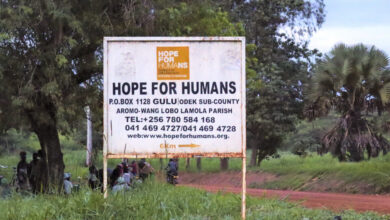By Jacqui Patterson and Mandy Lee, NAACP
Voting rights. Segregation. Criminal justice reform. For more than a century, the civil rights movement has taken on the inequities that divide and disfigure American society. Now the green building sector has joined the fronts of struggle for access and equity.
Why?
The green building sector is transforming the places in which we live, work, and gather. Sustainable buildings, defined by certification programs like LEED, promote the health and wellbeing of building occupants while minimizing climate change and pollution. For some people.
This wave of better building practices has yet to fully reach the people suffering the most from buildings that are unsafe, unhealthy, unaffordable, and unsustainable. African Americans and other people of color disproportionately feel the burden of unsustainable buildings: energy insecurity in their homes, health problems like asthma from poor indoor air quality, and damage from worsening disasters fueled by climate change. These are enduring legacies of discriminatory practices, disinvestment, and barriers to building wealth over the generations.
What’s worse, the sustainable building sector is an insider’s club with a serious diversity problem. Whether it’s as policy makers, advocates, architects, contractors, or even in the construction workforce, the most impacted communities are underrepresented in the design and construction of sustainable buildings. For example, according to the National Organization of Minority Architects, less than two percent of registered architects are African Americans, and less than 0.4% are African American women. Green building is a huge growth industry, but communities of color are not yet positioned to fully benefit from it.
When we decided to establish our new headquarters as a living building and began to explore what it takes to do so, we saw the problem firsthand at meetings of green building organizations. We were struck by just how homogenous some of those spaces were in terms of race, with a significant dearth of people of color engaged in these discussions. We juxtaposed this against what we knew to be true: Communities of color and low-income communities are more likely to be in sick buildings, whether it’s mold, lead, asbestos, or radon. We are more likely to be in the least energy-efficient buildings, and that is reflected in the fact that we pay the highest proportion of our income for electricity. And we are more likely to be in the least disaster-resilient buildings, with homes in floodplains or without reinforcement.
That’s why the NAACP recently launched the Centering Equity in the Sustainable Building Sector (CESBS) Initiative, pushing forward civil rights in this critical (if unexpected) new sphere. The NAACP will define and articulate an agenda for an equitable green building sector, using its Baltimore headquarters as a living laboratory for this concept. Through this effort, the NAACP will develop a replicable model for centering equity in all aspects of sustainable, healthy, safe, and regenerative buildings.
So, what would an equitable green building sector look like? It would advance community-wide transition, not just a few green buildings in isolation. Sustainability would be seen as a basic necessity – not a luxury item — in any building project. Low-income communities, communities of color, and women would be at the heart of a better building industry, supported by more inclusive education and professional development pathways. Sustainability investments would prioritize the most impacted communities. And underrepresented communities would be deeply engaged in planning and design, because “shaping the environment is best done by the people who live in it,” according to Professor Dale Glenwood Green of Morgan State University.
Some communities and organizations are getting it right and helping us imagine what is possible. For example, the Mental Health Center of Denver, Colorado planned to build a new, green campus in the predominantly African American and low-income Northeast Park Hill community. The Center sought input from neighbors to shape the design and function of the four-acre property. As a result, the Dahlia Campus for Health and Well-Being now offers a comprehensive array of services in addition to mental health care: a preschool that is inclusive of students regardless of ability; a pediatric dental clinic; an urban farm, teaching kitchen, and farmers’ market; and a variety of indoor and outdoor community spaces. The campus’ sustainability and equity approaches were verified through LEED Gold certification and a tool called the SEED Evaluator.
Another model is the Green Communities Criteria (GCC) program, a framework and certification developed by Enterprise Community Partners to bring the benefits of sustainable construction practices to low-income families and affordable housing. While this program is still in development, it has already produced 127,000 certified affordable homes through $3.9 billion in investment. Thanks to the leadership of standards like GCC, a total of 32 states have incentivized green building certification programs for affordable housing developments receiving support from the federal Low-Income Housing Tax Credit (LIHTC) program.
Fundamentally, sustainability without equity will merely sustain inequity. The civil rights movement has a critical role to play in creating a sustainable building sector that is both green and just – for the benefit of our families, our communities, the economy, and the planet.
This op-ed is adapted from two reports released today from the National Association for the Advancement of Colored People (NAACP) Centering Equity in the Sustainable Building Sector (CESBS) Initiative. Patterson is the Senior Director of the NAACP Environmental and Climate Justice Program; Lee is the program manager for the CESBS Initiative at the NAACP.






